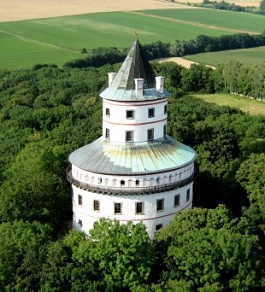
Anniversary of 400 years since the birth of Carlo Lurago
 |
Carlo Lurago came from a large family of Italian artists and builders. He was born in a small village called Pellio Intelvi near Lake Como. In 1638, when he was 23 years old, his stay in Prague is documented. Here, he primarily worked on commissions for the Jesuit order, but also as an imperial builder on the Prague fortifications.
Carlo Lurago (also Luragho) established a well-functioning construction company in Prague with his nephew Francesco Antonio Lurago and was among the most successful builders of his time. In 1648, he received burgher rights in Malá Strana, where he bought two large houses on Karmelitská Street. Later, while working on the fortifications of New Town and Vyšehrad, he settled in New Town. With his wife Elizabeth, he had two sons who died young.
However, Lurago did not work only in Prague; his name is associated with most of the significant buildings in Bohemia from the 1630s to 1660s - churches, palaces, castles, and fortresses. For instance, in 1658, he drew up the first project for the establishment of a pilgrimage site modeled after Italian examples on Holy Mountain near Příbram. Over the following years, with the support of several noble families, prominent figures from across the country, cities, and throngs of pilgrims, an area grew there that is among the most valuable structures of early Baroque architecture in the Czech Republic.
Lurago's company had numerous contracts from the church and noble families. He built churches, for example, in Náchod, Březnice, Klatovy, Sv. Jan pod Skalou, Hradec Králové, Chomutov, and Klášterec nad Ohří, and worked for the monastery in Broumov. He renovated castles in Náchod, in Nové Město nad Metují, and Humprecht near Sobotka.
Outside Bohemia, he also built in Silesia (Jesuit college in Kłodzko), in Austria (pilgrimage church Maria Taferl), and in Bavaria. There, between 1668 and 1678, he remodeled the cathedral in Passau, Germany, into the form of high Italian Baroque, which had been previously damaged by a great fire. This building is the largest Baroque structure of the 17th century north of the Alps. He also died on October 22, 1684, in the Bavarian town.
Carlo Lurago and his nephew and partner Francesco Antonio are not the only builders of the same name who have left their mark on Baroque Prague and Bohemia. In Prague, in the first half of the 18th century, during the period of late and high Baroque, Anselmo Lurago (among others, the court builder for the reconstruction of Prague Castle according to Nicolo Pacassi's design) also worked, who likely came from the same extensive family from Lake Como.
The English translation is powered by AI tool. Switch to Czech to view the original text source.
0 comments
add comment










